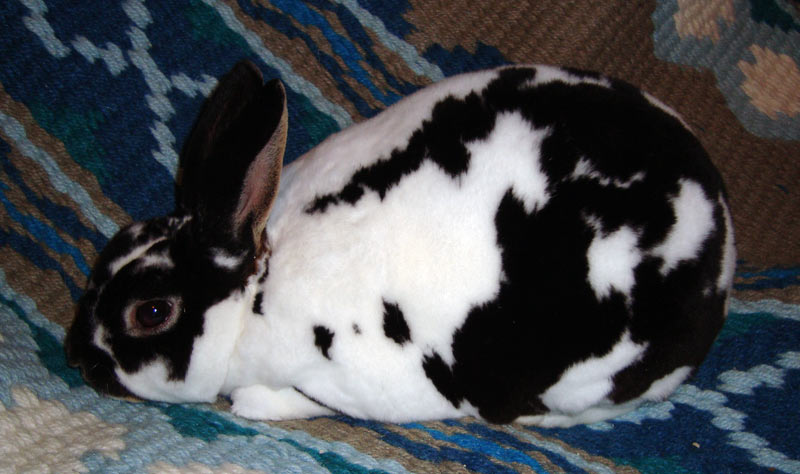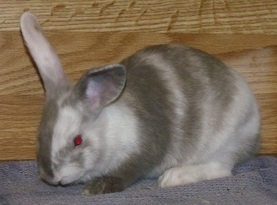Bunnylady
Herd Master
Rhinelanders are the same size as a Harlequin, 7 to 10 lbs, but with full arch type like a English Spot so they seem even bigger.
There is nothing "drastic" about the boundaries of the patterns on any color in the Harlequin breed. The problem is a thing called "brindling," which means a mixing of whichever two colors of hairs that particular harlequin has. Some brindle a lot, some only a little, some brindle more in some areas than others. The ideal animal has no brindling at all, but THAT NEVER HAPPENS!!!! Magpies, with their white background color, tend to show the difference more easily than the Japanese, so they win things like BOB more often. Patterns can be all over the place; you can breed two animals with most of the pattern and wind up with babies that are pretty, but have no distinguishable pattern at all.
Rhinelanders are like any other broken patterned breed; they have good patterns and bad patterns and animals with no pattern at all.
This is an adult male Mini Rex:

Breeds with fine boned type do not get heavy boned at any age.
There is nothing "drastic" about the boundaries of the patterns on any color in the Harlequin breed. The problem is a thing called "brindling," which means a mixing of whichever two colors of hairs that particular harlequin has. Some brindle a lot, some only a little, some brindle more in some areas than others. The ideal animal has no brindling at all, but THAT NEVER HAPPENS!!!! Magpies, with their white background color, tend to show the difference more easily than the Japanese, so they win things like BOB more often. Patterns can be all over the place; you can breed two animals with most of the pattern and wind up with babies that are pretty, but have no distinguishable pattern at all.
Rhinelanders are like any other broken patterned breed; they have good patterns and bad patterns and animals with no pattern at all.
This is an adult male Mini Rex:

Breeds with fine boned type do not get heavy boned at any age.
Last edited:



